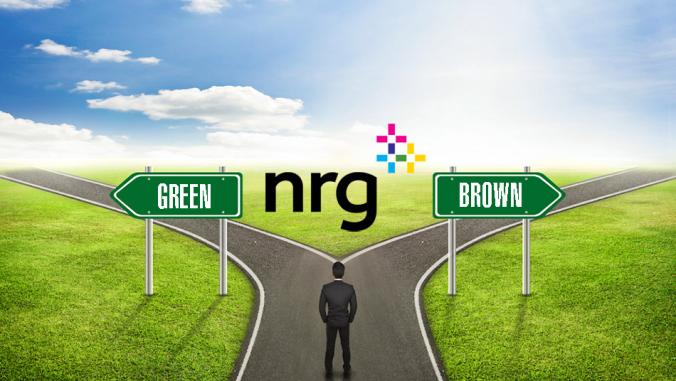TeslaCity: Will car company + solar company = shareholder happiness?
SolarCity's business model needs a reboot. Can it find happiness in the shadow of the world's coolest car company?

As I watch all the Wall Street teeth-gnashing over the proposed related party transaction between Tesla and SolarCity, I wonder whether there is a shortcut that enables everyone to focus on the substantial commercial merits of the transaction.
Let’s go back to the day that all of this started, October 29, 2015 to be exact, when Solar City guided its investors down to a 41% percent growth rate for 2016. SolarCity was brutalized the next day by a massive share sell of, shaving billions of dollars off its market cap. At that point, it became inevitable that SolarCity’s days as a publicly traded company were numbered.
The unmistakable market signal on that day was that SolarCity, despite its many inherent market strengths and despite being a beneficiary of the Elon Musk halo effect, would not be permitted to pull an "Amazon" — that is, attract a valuation that defied traditional valuation metrics.
Yet, notwithstanding SolarCity's poor scoring on traditional financial metrics, it is equally ridiculous to think that as the market leader, with no meaningful competition for supremacy, in a trillion-dollar-plus addressable market, it has only a $2 billion market cap.
Impossible reboot?
The disconnect is in SolarCity's business model. To attract institutional investors, at a respectable market value, SolarCity needs to reboot its business model away from the strategy that vaulted it to its unassailable leadership position in the burgeoning home solar industry. And a reboot is nearly impossible for a high-growth public company to do under the harsh glare of investor scrutiny and relentless quarter-on-quarter reporting.
What does SolarCity need to do to reboot? In short, a lot: a new approach to customer acquisition — door-to-door has reached its limits, particularly when you are selling a service with a $20-30,000 average value; a greater focus on the customer experience; and ditto with respect to the after-sale upsell.
But, most of all, SolarCity needed a quick phase-out of zero-money-down, long-term-lease financing, a funding arrangement which once was essential to the kickstarting of the entire industry, but has mutated into the crack cocaine of home solar companies that still depend upon it.
Lyndon Rive and Tanguy Serra — the company’s CEO and CFO, respectively — probably don't agree with everything said in the previous paragraph, but even if they did, to implement all those changes would risk another selloff like the one they experienced last November.
The primary motivation for the proposed transaction is that it enables SolarCity to reboot outside the public eye.
Why? Because a radical reboot of the type I described almost certainly would lead to a substantial reduction, at least temporarily, in their topline sales. So, why industry analysts are focusing increasingly on the very real commercial benefits of the proposed transaction to SolarCity — the cross-selling benefit with Tesla and a branding benefit which I think is being significantly underestimated — I belive the primary motivation for the proposed transaction is that it enables SolarCity to reboot outside the public eye.
Being bought by Tesla is, of course, not the same as fully going private. But if SolarCity is just 10 percent of the combined company, there will be many fewer questions from analysts and investors about what SolarCity, now Tesla's home solar division, is doing — as opposed to, say, how the Model 3 is progressing. Tesla remains, after all, overwhelmingly a car company post-transaction, and the car business will remain the primary focus of its analysts and investors.
Of course, that is the potential snag in the transaction. Up until the announcement, Tesla investors thought they were investing in a car company — a company entire focused on disrupting GM and Ford and the other incumbent automakers. Now the disconcerted Tesla shareholder base is finding out they have invested in a mobility-energy storage-solar conglomerate.
On top of this "October surprise" in June, there will be corporate governance, management bandwidth, conglomerate discount and availability/allocation of capital issues when all these money-hungry clean energy businesses are under one roof.
On top of this "October surprise" in June, there will be corporate governance, management bandwidth, conglomerate discount and availability/allocation of capital issues when all these money-hungry clean energy businesses soon to be weighing down one balance sheet. When you put them all together, there still is some chance that the deal won’t get approved by Tesla's independent shareholders.
Jamming the deal
Musk's force of personality is such that he has the ability to jam the deal through on the terms announced. Tesla shareholders will realize that they are in a damned-if-we-don't, damned-if-we-do position and will probably vote “yes,” even if they resent doing so. The question that needs to be asked in the Tesla/SolarCity governance world is, is it worth it to Musk to dissipate the reservoir of personal goodwill that he has built up with his institutional investors on a home solar transaction?
That is a reservoir he might need down the road, should Tesla stumble in an area more directly related to the success of its core automotive business.
For SolarCity, the dangers are more subtle. We all watched Vivant whither on the vine as it waited, in vain, to be acquired by SunEdison. What will happen to sales, financings and product development while SolarCity waits for the results of this uncertain shareholder vote? If the deal is rejected, a wounded SolarCity will be "in play." Indeed, the investment bankers already are shopping it. The multi-month pendency of an uncertain transaction hurts SolarCity at a time when it cannot afford to be treading water.
By offering Tesla investors a way off the horns of the dilemma, the deal gets done quickly and Musk adds to his aura as a shareholder friendly visionary with a reservoir of goodwill .
I wonder whether there is a shortcut to a win-win-win outcome for all involved, whereby Tesla takes on one or two partners, maybe a financial partner but certainly a strategic one, to do the same transaction with SolarCity that Tesla currently contemplates doing single handedly. Partners would preserve the commercial benefits of the transaction to SolarCity and enable Tesla to secure a portion of the solar company’s bargain-value price, while substantially mitigating most if not all of the governance, balance sheet and conglomerate drawbacks of the full consolidation acquisition.
Perhaps most importantly, by offering Tesla investors a way off the horns of the dilemma that they currently are confronted with, the deal gets done quickly and Musk adds to his current mystique as a shareholder friendly visionary with a reservoir, deep and untapped, of goodwill that can be called upon at a later date.
The ultimate success of the Musk complex of companies is important to the clean-energy industry and to society. Both the auto and energy sectors are dominated by well-financed incumbents, steeped in their own histories, with a stake in maintaining the status quo. A competitive threat from a rising contender will prompt them to change their ways much more quickly and completely than the threat of government action or public protest ever would. Certainly, Tesla is that contender in the automotive sector. And in the power industry, after the flame out of SunEdison, SolarCity is as close as it gets.
We do not want them to fail.





